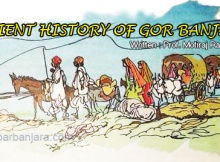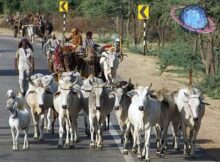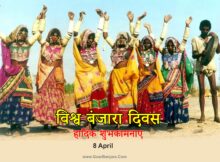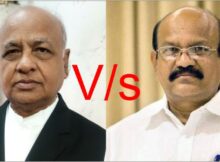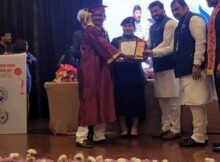“GOR: The Gazette of Royal Ruling Race”
Nilesh Prabhu Rathod Bhukiya
gor.nileshrathod@gmail.com
Prologue:GOR Clan is an ancient Royal Ruling Race in the world and glorious antiquities for their Descendants but their footprints of flourished kingdom have been destroyed and banished by the inferior followers being KOR they were jealous,greedy,envy with GOR.Bengal formerly known as Gaur Desh, Panchmal Desh Kandhar,Nepal is also having Gaur city, Afghan formerly known as Ghor province,Magadha,Delhi,Avadh,Rome,Iran, King Mohammad Ghori alies Giyasuddin Ghori were Gor by race & he ruled Afgan and India as Delhi was his capital but he c characterized as he was ravening but we have to find out that whether the history written is true or not because he left India his successor Kutubuddin Aibak as ruler it shows that he was not greedy.There are also references of Behram Gor in medieval age,King Gopichand was famous for his truthness.
Sashank Gaur Bangal , Pal Empire During DevPal’s rule. The Pal empire extended from Bengal (Gaur kingdom) to Afganistan (Ghori kingdom).After the end of the Gupta Empire, Sashanka of Gaur(Gor) (end of 6th and 7th century C.E.) became the first powerful independent Bangla ruler. He was an” anti-Buddhist”, Gaur king. His rule extended over all Bangla except maybe Samatat and extended beyond. His empire fell after his son “Manav” took over internal struggles continued and around 648 AD, Shaiva Hindu king Bhaskara Varman, of Kamarupa, conquered Pundra Varddhan and Karnasuvarna creating another small empire. And as Bangla was fighting at home, HarshaVardhan of Uttarkhand started to create a large empire. He conquered Magadha defeating PurnaVarman by 641 AD. He conquers Kangoda and Kajangala by 642 AD. Shasanka stops his expansion on the East. In the south he is stopped by the Chalukyas. His empire stretched all over northern India with the exception of the Bengal region. Some historians erroneously put Bengal in his empire as in the map. Further inwards, in Banga, the first Buddhist kings emerged in the 7th century and Samatata became a large Buddhist nation with a few dynasties rising, including the Devas. Samatata was probably under the Banga region of Bengal. There were also some small semi independent Hindu kings in Bengal. Around 647 AD a little known event takes place destabilizing further the region. Buddhist Tibetan kings Srang-tsan-gampo 600-650 AD and Ki-li-pa-pu 650-679 AD conquered Magadha Bihar and Kamarupa(Assam) and became rulers of much of north India. This weakened the power of North India. After the death of Harshavardhan, rule of Magadha went to his great grandson and three of his descendants. Their rule ends around 725 AD when they are conquered by the Shaila dynasty, a new name in the history pages. The Shailas were probably from the mountains. They occupied Pundra Western Bengal. Their rule did not last long. The empire of Harsha is called the Harsha empire and is considered the last great Indian empire even though later several great empires are formed. At the time of Harsha, India was basically divided into three major empires. Harsha was in the north, Chalukyas were in the middle and Pallavas in the south.YashoVarman first conquered Magadha and Gaur Gor Province Western Bengal and conquered Banga Central Bengal 725-35. But another political power also arose at the time in Kashmir, another old part of the Gupta empire. LalitAditya of Kashmir defeated YashoVarman to expand the Kashmir empire. Then in 748/759 AD Vagadatta king Harsha, king of Kamarupa and father in law of JayaDeva, king of Licchavis conquered Gaur Odra, Kalinga and Koshala. creating another empire.
Sometime around this time the Malla dynasty was formed in South West Bengal and lasted for a thousand years until the 16th century. (Mallas ruled Kathmundu Valley 900-1700AD Rise of Bangla.In 750 AD, in the middle of volatile empires, Gopal became elected as the ruler of Bangla from Gaur(Gor province). It appears Banga had finally decided to unite to face the others. Gopal Dev was the ruler of Bvarendra North Bangla and not of high caste. However, the Pals are originally from Karnataka, South West India. He established the Pal or Pala empire 8th to 12th century. The Pal emperors cortributed to the establishment of Bangla as a great nation. Gopal ruled 750 to 775 AD consolidating Bangla. His son Dharma Pal ruled 775 to 810 AD was the Ashok of Bangla. He attempted to expand the empire. He fought with the Pratihara king Vatsa from Gujarat which lies on the west coast of India. Even though he was defeated, fortune was on his side. Rastrakuta king Dhruva ruled 781to 794 AD in the south rose and defeated both him and Vatsa. Dhurba, however, retreated leaving the north without annexing the land. This allowed DharmaPal to conquer North India. He took Bhoja King Bhoj province, Matsya, Madra, Kuru, Yadu, Yavana, Avanti, Gandhara and Kira. He defeated IndraYudha and ChakraYudha of Kanauja. It is then that he probably conquered Nepal which still bears -Pal at the end of its name. He fought over Nepal with Mu-ti-vtsan-po of Tibet. He allowed his conquered teritories a degree of independence and the teritories in return accepted his overlordship. By this he became Uttara Path Nath,the lord of the North.Then he was defeated by Nagabhata II, son of Vatsa of Gujarat. However, once again Govinda III of Rastrakuta defeated Nagabhat. DharmaPal accepted the overlordship of Govinda after this. The Rastrakuta’s empire extended from Gujarat to tanjore. The Pal empire extended from Bengal to Afganistan. In this way the Pal empire became part of the Rastrakuta empire for a while. They created a lose but large empire through this alliance.
DharmaPal’s son DevPal tenure 810 to 847 AD was also a conqueror. He defeated the Huns, Utkala, Pragjyotisha, Dravid and Gurjarat it is to find out whether Bhojadeva was grandson of Nagabhata. Like DharmaPal he did not attempt to conquer all of India, but only North India.
Towards the end of the 9th century the Pal empire underwent decline. Magadha, Anga Bengal, and Banga was conquered probably by AmoghaVarsha while Rarh was conquered by Orissa. BhojaDeva, Kalachuri, GunambodhiDeva, and Guhilot king Guhila II conquered all North India west of Magadha. Dahala king KokallaDeva I 840-890 looted wealth from Bengal. MahendraPal, son of Bhoja, extended the Pratihara kingdom well into Pundra. Narayan Pal, the Pal emperor managed to only retain Banga and Bihar but probably went back under the over lordship of the Rastrakutas.Orissa and Kamarupa become powerful next door. And in the 10th century the Pals regain the Magadha but loses it again. Apparently Bangla disintegrated into individual states. Anga, Gaur(Gor province), Bangala, Rarh etc. Or it could be that central control had just weakened. During this period many smaller kingdoms appeared in Bangla. In the north a Khamboja kingdom appears at Priyangu. In the East and South Bengal saw the rise of Harikela under the Devas from Vardhamanapur. In the Tripura region, LahayaChandra rules for a while. In the Dhaka region, the Chandras ruled. The Chandras ruled over the Devas from Chandradwip and later from Bikrampur .The Chandras too have their highs and lows. There was another Chandra dynasty in Arakan but whether they were related to the Dhaka Chandras is not known.
Finally under VigrahaPal’s son Mahi Pal I age 977 to 1027, the Pal empire is somewhat reconstituted. It now comprised of East bengal, Tripura region, Anga, and some parts of West Bengal. He suffered defeats at the hands of others but recovered part of the old empire but that ended with his death. His empire did not have the great expanse of his predecessors but maintained a dignified extent. However, his son could not maintain much of the empire. A new group of Mandalikas emerge in Western Bangla at this time as well.
It seems there is another Mandalika later in Gujarat who are forced to convert by Muslims.
East Bengal was again broken and remained outside the Pal’s control. The Sen kindgom once a tributary of the Pals become more powerful aswell. The far eastern part of Bangla sees the rise of Pattikera kingdom Tripura. In East Bengal rises the Varmans who came from Kalinga. And there are more conquerors coming to the Magadha-Bengal region. The Sens become independent and finally take Bengal from the Pals when Ballal Sen conquered Gaur(Gor province). The Last Pals rule until 1174 as rulers of Gaya. The Sens ruled 1162-1223 C.E. even though they were in existence much longer since 1095.
Both the Pal and the Chandra emperors were Buddhists and in this period Bangla became a centre for buddhism. Under the Pals Bangla reached its high water mark. At the peak, Bangla ruled all north India until Afganistan. The Sen dynasty was Hindu and brought in Brahmins from abroad and made Bangla into Hindu somewhat by force. During the Pal era, Bangla became foremost in learning and culture in the world.It should also be noted that there remained a Pal king in Kabul whose empire consisted of Kapisa on the western side of the Hindu Kush Ranges and Punjab on the Eastern side, much like Ambhi before Alexandre. In 980 AD, Raja Jay Pal Shahi faced Muslim invaders who had taken Gandhar. These kings were called the Shahi kings and ruled Punjab.
Afganistan was part of India from antiquity and was called Upa-Gana-Stan.
The king of Gazni Sabuktin conquered Kabul. He is famous in Afganistan for his fierce fighting against the Ghors and because he built mosques after destroying Hindu Temples. The main mosque in Kabul is built on the site of a Hindu temple aswell.
RajShahi is a district in Bangladesh that means Shahi King.
The several regions that rose and fell in the Bengal area in that period are Pundra, Gauda or Gaur, Dandabhukti, Karna Subarna, Varendra, Rarh, Summha Desa, Vanga, Vangala, Harikela, Chandradwipa, Subarnabithi (central Bangladesh, Navyabakashika, Lukhnauti and Samatata. This was also the period when the languages Gaurean & Bangla came into form. Bangladesh and West Bengal are the same nation and together they once formed the major part of Bangla (Banga or Gaur (Gor province)). Even though Bangladesh is a modern state, her history can be traced back to about 1000 BC. There are many theories about the origin of the name B(v)anga or B(v)angla. Some linguists believe that the name originates from the Tibetan word, “Bans” which means wet or moist and Banga (Bengal) is a wet country crisscrossed by a thousand rivers and washed by monsoons and floods from the Himalayas. Some others believe that the name originated from the Bodo (original Asamese in North Eastern India) “Bang La” which means wide plains. This theory is extremely plausible.And my thought regarding the term is might be derived from Banjaragaur.
The Indus civilization ended around 1800 BCE and there is a marked change in Bangla around this time. Were the ruins such as ChandraketuGarh (Gaur)(Gor) built upon older cities of the past.South Indians have given us several unique dance forms and Gaud(Gaur/Gor) of Bangla has also given us unique dance forms. In the very ancient times, Pundra, Gaur Gaud or Garh,Gaur/Gor Rarh Radha, Ladha, Sumha, Vajra Brahma, Tamralipti, Samatata, Banga and Anga comprised Bangla. At one time Gaur was the name used for the Bengal region but the name Banga later became popular. This might reflect the prominence of the regions in a period whose history is lost. Banga is first mentioned in the Aiterya Aranyaka, a Hindu scripture. The book mentions Banga as a non-Aryan Dravir nation. In the Aitareya Brahma, the people of Pundra tribe along with Andhra, Shavara, Mulinda and Mutiba tribes) is called dasyu, clearly non- Aryan or Dravir .Bangla is also mentioned in the Mahabharat, one of the four great epics. In the great war of Kurukshetra described in the Mahabharat, a Bangla king fought for the Kaurovas (Kaurovas are supposed to be the villains. They are most probably Aryans and so this might show the beginings of Aryan-Dravir alliance makings.). Another time, King Basudeva, of Gaur fought with Krishna in Dwarka, a port city in Gujarat on the western part of India. The Mahabharat also mentions three Bengali princes who try for the hand of princess Draupadi. In this epic, some Bengals are mentioned as untouchables. These were the coastal tribes of Bengal who were called Mlechchha.
All the tribes in Bengal were considered non-Aryan. Banga and Kalinga were Dravir even in Mahavira’s time and Aryanization only began with Ashok when part of it was under the Mauryan empire. As Aryanization penetrated into Manu classified Bengal Pundra, Shaka and Dravida as fallen Kshatryias Kshatriyas were the warior or ruling caste. This was an attempt to incorporate them into the Aryan caste system. Towards Arjun’s time, Mahabharat and the Vayu and Matsyapuranas also calls Bengal Kshatriyas. And later the Jaina Pragyapana calls Bengal Aryans signifying the begining of absorption. It was probably then that the caste system became rigid and oppressive to maintain segregation.
“The Culture of India is pre-Aryan Were they Gor? in origin. As in Greece, the conquered countries civilised the conquerors. The Aryan Indian owed his civilisation and his degeneration to the Dravidians as the Aryan Greek to the Mycaeneans.” — Hall in his “Ancient History of the Near East”
It was only during the Gupta rule around the 4th century period that Aryanization fully penetrates Bangla. The caste structure is instilled and Brahmans are mentioned. Vatsyana in his Kamasutra mentions Brahmans in Bengal. Vatsayana talks about handsome Bengals who painted their nails to attract girls.
Ancient Bengal men painted their nails to attract girls. This is the earliest mention of colouring nails. In the ancient Indus, girls used lipstick which is also another first use.Ancient Hindu Center Many think that the concepts of karma and transmigration of the soul, the practice of yoga, the worship of Shiva, Devi and Visnu, and other rituals that are not Vedic came from the Aryans. However, these are now believed to have existed in Bangla before Aryanization.
This is also supported by the fact that today at least Yoga and Shiva are associated with the Indus civilization which existed before the coming of the Aryans. The cultivation of rice and other crops such as the betel leaf, coconut, tamarind and nut, the Hindu dress of dhuti, marriage rituals with vermilion and turmeric, and many other customs come from pre-Aryan(Gaur) ancestors. Age of Glory Bengal’s history in the 1st millennium BC was that of glory and expansion. This period is connected not to North India but to South India and the eastern Asia. Its expansion was a maritime expansion. Bengal was an ancient seafaring nation, possibly a continuation of the seafaring of the Indus days. As early as 544 BC, Bengali prince, Vijay(a) Singha of Bangla established the first kingdom in Sri Lanka. The ancient name of Sri Lanka, Simhala Singhala comes from the name of Vijay Singha. The Sri Vijaya empire of Indonesia that dominated East Asia for over a millennium bears Sri Vijaya’s name, possibly meaning that it was founded by him. This empire is known to have been a strong indian centre as early as 135 AD by the Chinese, which means that Indians were there earlier in history, possibly the 6th/5th century BC, if Sri Vijaya founded the empire. From here the region of cambodia to Vietnam was dominated by the ancient Bengals.Madras was another kingdom established by the Bengals(Gaur). These show that Bengal was a well organised land even in ancient times. This period of expansion is unmatched in later history. An intersting point to note: the Madras people are Tamil were the original Bengals same as Tamils?
Early History Early India, the ancient kingdoms were called Mahajanapadas. There were several of them all over Northern India. Anga, Ashmak, Avanti, Chedi, Gandhar, Kashi, Kosala, Magadha, Matsya, Shursen and Vatsa were the major kingdoms. Some Mahajanapadas like Banga, Kamboj, Koliya, Kuru, Lichhavi, Moriya, Panchal, Shakya and Vrijji were republican states. The republican states were not ruled by kings but had assemblies of senior and responsible elders called ‘Gana-parishad’. The Magadha, Kosala, Vatsya Bihar, and Avanti Ujjain in Madhya Pradesh were the most notable kingdoms of ancient India.
Anga: Anga was an ancient kingdom. The people were originally Dravir but were absorbed early in the Aryanization process. They had become part of Magadha in the 6th century BC. Anga was part of Bengal but now mostly lies in Bihar, including her capital,Monghyr.
Ashmak:Avanti: A kingdom near Ujjain in Madhya Pradesh. He warred with Magadha, Kosala, and Vatsa. Eventually Magadha emergedvictor.
Gandhar: Present day Afganistan. Afganistan was part of India until the 10th century when it was overrun by foreign invaders i.e.Gazni ,later ruled by Ghori.
Kashi: Today Kashi remains as the famous holy city Varanasi, Banarasi or Banaras.
Kosala: Of all the small kingdoms in North India, the history of Magadha and Kosala are documented well, because of Buddha and Mahavira’s presence there. There are references to Bangla, since Buddha had travelled there to preach.
Kosala was an empire roughly the size of Britain and is also the birth place of Rama, the Hindu Avatar. It existed in Central North India, with capital at Ayoddhya. Shravasti Kushavati and Saket were its other famous cities. Archeological,Gor people have claimed that they are Sindhu culture by origin, excavations have shown the remains of a great empire there, which existed sometime between the end of the Harappan civilization and the emergence of historical empires in India whose tales might be recorded in the Mahabharat and Ramayan. The legendary Tirthankaras of Jain are also from here. Kosala was ruled by Prasenajit during the time of Buddha, around the 6th century BC.
Magadha: Neighbouring Magadha (an ancient Dravir nation) started getting powerful in the 7th century BC. It started out as a sixth of the size of Kosala in the extreme south east of Bihar. Its old capital was at Rajgriha in present day Bihar. In the 6th century BC, it was definitely a major power under King Bimbisara. Part of the rise in Magadha’s power was due to its king Bimbisara’s bold new strategy. Until then in Magadha the armies were loyal to the different tribes but Bimbisara changed this making the armies loyal to himself.
Magadha is the first kingdom recorded in Indian history that attempted to create a great empire. There is evidence that Buddha himself had counseled the King Bimbisara of Magadha as how to subjugate and annex the neighbouring Lichavi republic.Later Bimbisara became the first patron of Buddhism. Buddha had highly influenced Bimbisara. The capital of Magadha also became Buddha’s homebase. There were thousands of Magadhans who had converted to buddhism by then. It must be noted that Prasenajit later converted too, leading to massive success of early Buddhism.By the time Magadha started to expand, there was probably a high degree of Aryan penetration into Magadha, as evidenced by the fact that Buddha spoke Maghdi Sanskrit, which is an Aryan language. Magadha was probably one of the first Aryo-Dravir synthesis centres. Both the Buddhist and Jain religion developed here.
In its early stage it anexed the smaller kingdoms of Kashi, Madra and Anga And also lost in antiquity, Prasenjit carried out a long protracted war with Magadha. Eventually Prasenajit was deposed by his son and Kosala was overwhelmed by Magadha. Thus Magadha now stretched all across Northern India becoming the first historical empire of North India. King Ajarsatru, son of Bimbisara started the task of building the empire in 490 BC and Magadha was extended under great Nanda kings as far west as Punjab. The Nanda kings had set up an effective administrative system that was necessary to run their large empire. They huge four-fold army of two hundred thousand infantry, twenty thousand cavalry, two thousand chariots and three thousand elephants. They introduced the stem of standard weights and measures .The Nanda Kings were patrons of art and literature. By the time Alexandre conquers northern India in 326 BC, Magadha was a great empire under the Nandas and this was the seed from which the Mauryan empire germinated, retaining the great beaurocracy, army and passion for arts and litterature of theNandakings.This is how the royal race of rulers became downtrodden,Gor struggled first with Buddhists King,claiming them as Kafir,later with foreign invaders called them as Firangi and further with Eslam crusaders.
Epilogue:
The word ‘MAN’ is derived from Gor word ‘MANKYA’ and it is now proved that ancestor of MAN were Monkey the same word is also from Mankya.
Period of Arabian Nights were between 6000-1000 BCE,Story of Oedipus the Rexes by Banjara with great faith.It means that Gorboli is older than the Greek Language.
Lamani of Ashdod had their Kingdom in ancient Period.
Kautilian Arthshastra states with prior permission of Tanda Trader,Foreigner can enter in State.
Lanjatissa (Lamani tis) was king of Ceylon (Shrilanka) 119-109 BCE.
BC Ptolemy,Plinee & Strabo had given information about Ladeni (Trade)Laman Tanda in ancient period .
Commodities were supplied by the Laman Tandas all over world in the age of Satwahanas.China Traveller Huantsang informed King Sashank means Soma ruled 606-638 AC for 32 years in Bengal.He belongs to race of King Gopichand Gor,Soma is traditional name of Banjara Community.
Thus it has proved that “GOR: were Global Royal Ruling Race”
Sources:
James Hewitt : Ruling Races of India in prehistoric times
A Short History Of Bengal by Tanmoy Bhattacharya
A History of the Indian People by D. P. Singhal
James Todd :Annals and Antiquities
The voice of Gaurs
NBPA Manuals
History of Middle Asia,Bihar Govt.






